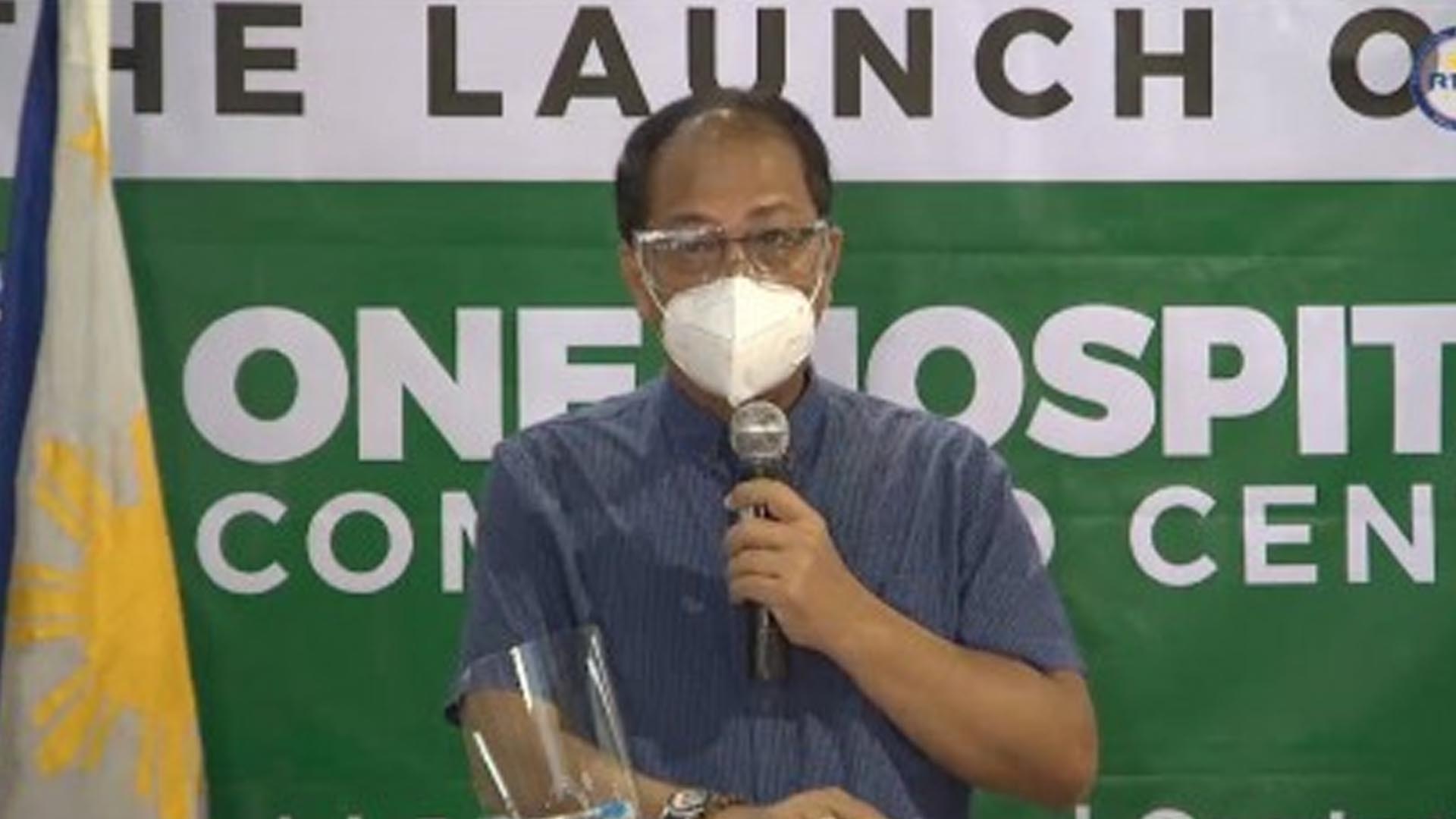The second phase of the government’s national action plan is aimed at reducing the mortality rate among coronavirus patients through establishing the “One Hospital Command” system, Sec. Carlito Galvez Jr., National Task Force Against Covid-19 chief implementer, said Thursday.
Galvez, also the presidential peace adviser, said the establishment of the system would reduce the number of fatality rate among the infected ones, which is the main purpose of the government’s action plan to combat Covid-19.
“This system will maximize the use of our temporary treatment and our monitoring facilities which have been built specifically for mild and asymptomatic cases,” he said during the launch of the Covid-19 command center in Makati City.
Through this system, he said, the waiting time for coronavirus patients to be admitted in the hospitals for treatment “will significantly be reduced.”
Galvez also echoed President Rodrigo Duterte’s remark to prioritize every coronavirus patient to recover from the disease.
He added that lowering the fatality rate for Covid-19 could help revive the country’s economy.
“As told by our health secretary Francisco Duque III, we need to reduce our fatality to the minimum level so that we can open up our economy,” Galvez said. “Without doing that, we cannot open up and recover our economy.”
“We will recalibrate our plan and also make the use of these 15 days in order to prepare us from this Covid-19 pandemic health crisis,” Galvez said.
Strategies during MECQ
Galvez, meanwhile, admitted that implementing the two-week modified enhanced community quarantine (MECQ) period is not enough to address and contain the new coronavirus cases, “but we will continue to work hard [using] our strategies to reduce the new cases at the same time, minimizing deaths.”
Galvez said for the next 15 days, the task force will visit the critical areas with high risks for Covid-19 cases “to communicate and educate the local government units (LGUs) and their health professionals on how to implement localized zonings and lockdowns.”
Briefings and tool kits, he said, will be provided to them.
Galvez also cited the vital role LGUs play in the fight against the dreaded Covid-19.
“So far, what we are doing right now through the one hospital command, we are capacitating our health capacity,” he said, noting that the government is boosting additional bed spaces to address the increasing admission in various hospitals catering to coronavirus patients with severe and critical symptoms.
On the other hand, the government is mulling to convert Quezon City’s East Avenue Medical Center (EAMC) into a dedicated hospital for coronavirus-infected patients.
“It would provide 250 isolation and ward beds, at the same time additional ICU [intensive care units], more or less 20 to 30 ICU beds,” he added.
Galvez, moreover, said the Quirino Memorial Medical Center could also provide an additional 50 ICU beds and 100 isolation and ward beds.
“We also expanded PGH [Philippine General Hospital], it can accommodate 50 to [an] additional 100 beds as well as the Lung Center and Quezon Institute,” he said.
Galvez said the National Task Force on Covid-19 (NTF) and the Inter-Agency Task Force for the Management of Emerging Infectious Diseases (IATF-EID) will simultaneously visit all the LGUs in the National Capital Region (NCR) within this week.
The government will also visit every hospital that is serving Covid-19 patients, he said, to monitor its preparations on pandemic response and to provide support to its healthcare workers.
More healthcare workers
Galvez reiterated the massive recruitment of the Department of Health (DOH) to support the manpower of the medical front-liners who are battling the dreaded virus amid the health crisis.
“They continue to save lives and treat more patients even though they have been exposed [to] Covid-19 for more than 180 days now,” he said.
Galvez assured the public that the government will continue to take care of health workers.
“We will concentrate our activities in order to reconstitute, motivate, and also to preserve our health workers,” he said.
Gov’t czars vs. Covid-19
Meanwhile, Galvez assured that there will be no duplication of functions among the created task forces, health units, and assigned individuals for the emergency response.
“There will be no duplication of functions. The different responsible persons for every strategy — will have better focus. As we establish the One Hospital Command [system], at the same time, we had our different czars [for] those different milestones, pillars of our strategies including testing, tracing, isolation and treatment are boosted,” he said.
Galvez explained that the NTF command center, along with the national, regional, and local organizations, were tasked to report and collect data as well as to disseminate information on the emergency response.
“As we see, it is becoming more integrated especially on the prevention, tracing, testing, isolation and the treatment is working fast as one body and the response is dramatically and significantly increase in its milestones,” he said.
Galvez said the establishment of the command center has formed a strong referral system between the private and public hospitals.
“The coordination also on logistics and deployments of the critical items from the DOH was also hastened, (so) that’s how we see it, there is no conflict but there is also complementary functions on the hierarchal organizations of the IATF and the NTF as well as the operational one command for various strategies,” he said.
It could supplement the strategies of the government to respond to the prevailing health crisis, he added. (PNA)





















